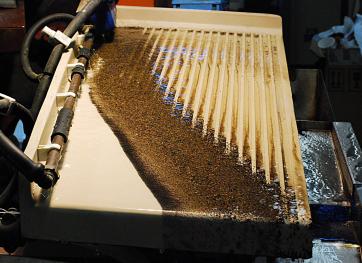Mineral Beneficiation

Hazen studies, tests, and develops new mineral beneficiation methods. We are qualified to perform laboratory and pilot plant studies using all types of beneficiating methods, and we have significant experience in the engineering design of operating plants and in production assistance. This capability is particularly important because laboratory and pilot plant activities are aimed toward practical, economical industrial operation.
Mineral beneficiation is the process of concentration, and was first described in Agricola's famous treatise, De Re Metallica, published in 1556. The earliest ores to be discovered and processed were of such high grade that they did not require beneficiation, and they satisfied mankind's needs for nearly 3,000 years. By the end of the Industrial Revolution, however, most of these direct-smelting ores had been consumed. Concentration was now necessary, but the means for achieving it were limited to simple mechanical schemes such as sluicing and screening or the most basic method of all, hand sorting. In the late nineteenth and early twentieth centuries, the demand for metals overwhelmed such capabilities, and an array of new beneficiation techniques appeared: jigs, tables, spirals, and a truly revolutionary process called froth flotation.
Capabilities
Contact Hazen
Main (303) 279 4501
Fax (303) 278 1528
E-mail / Directions
Submit RFP
